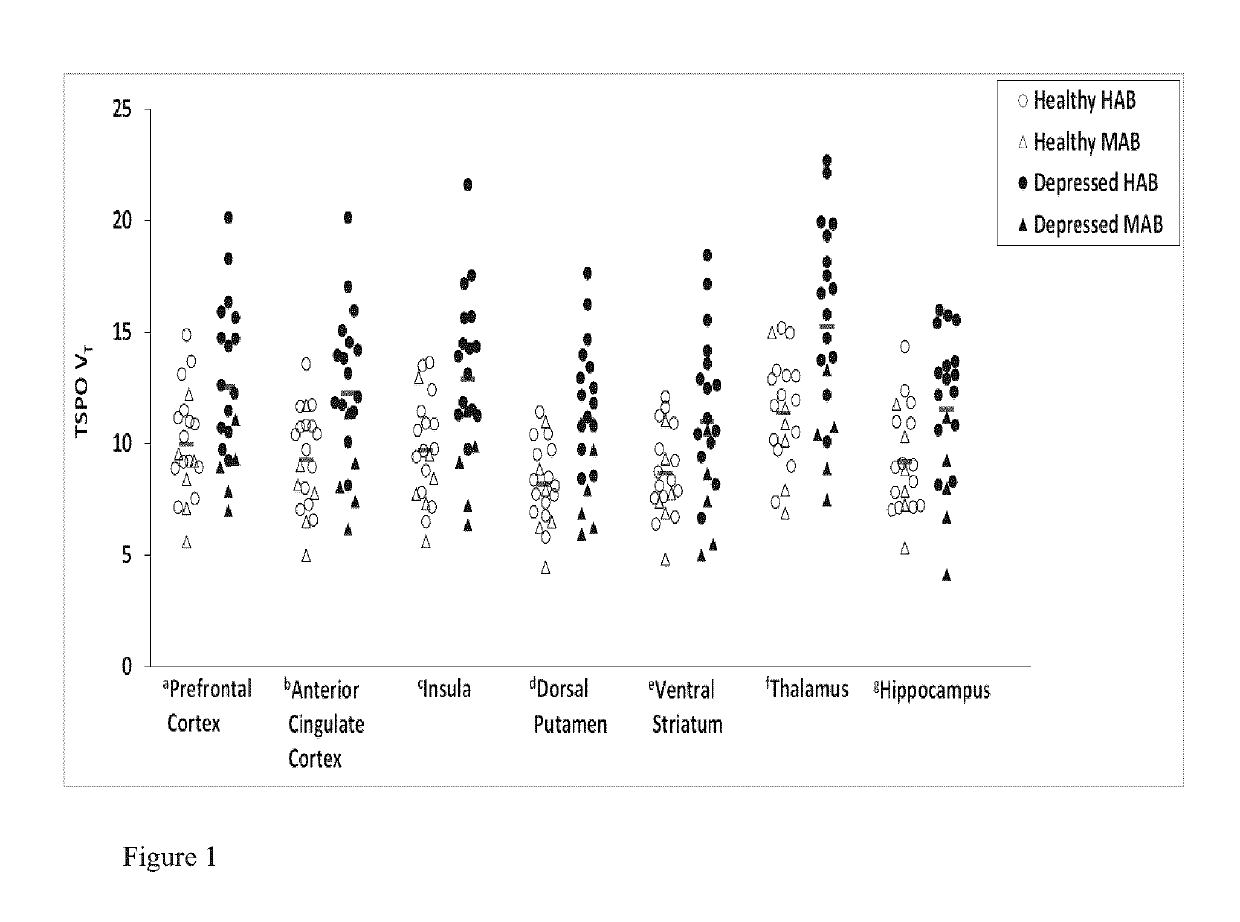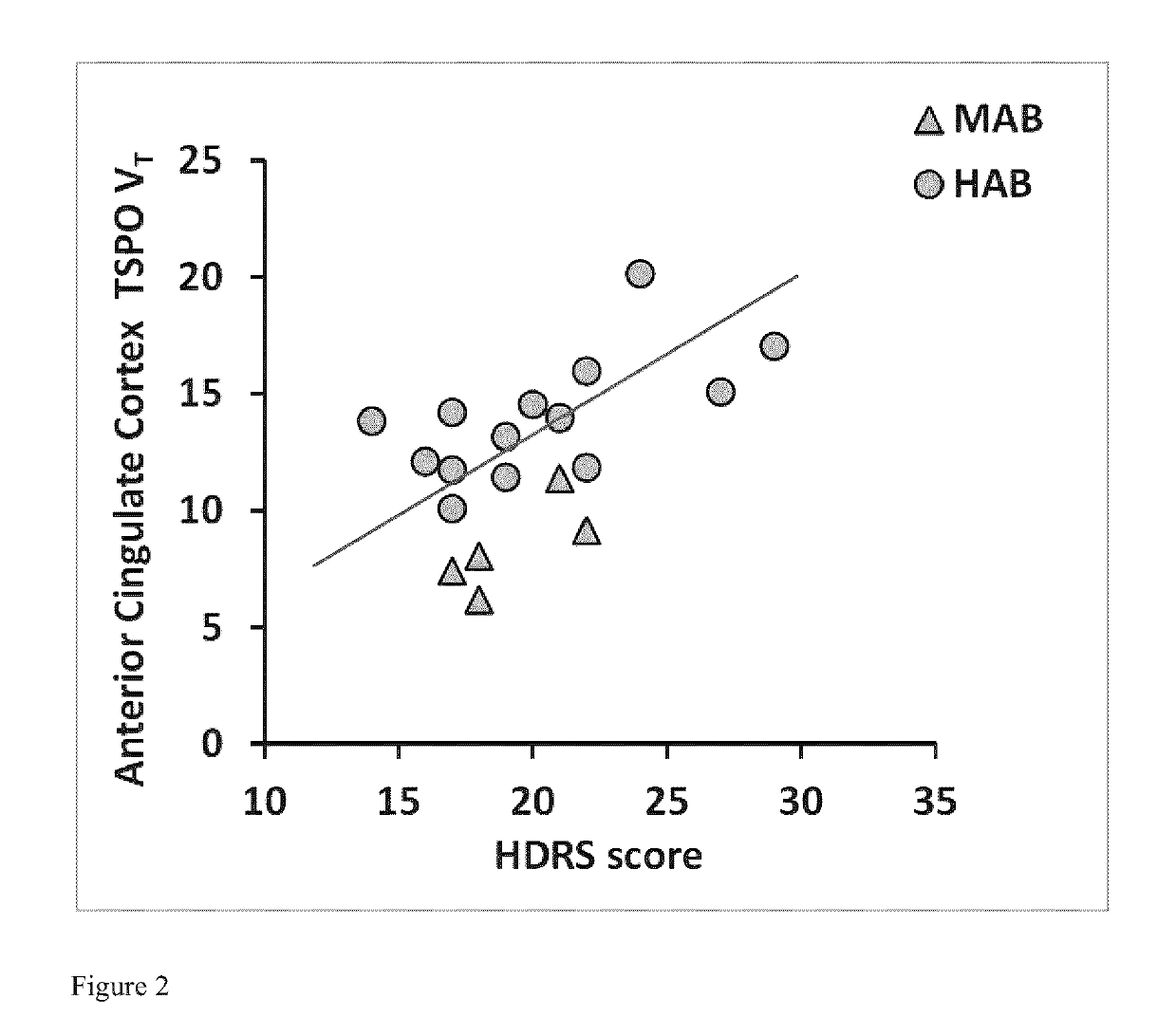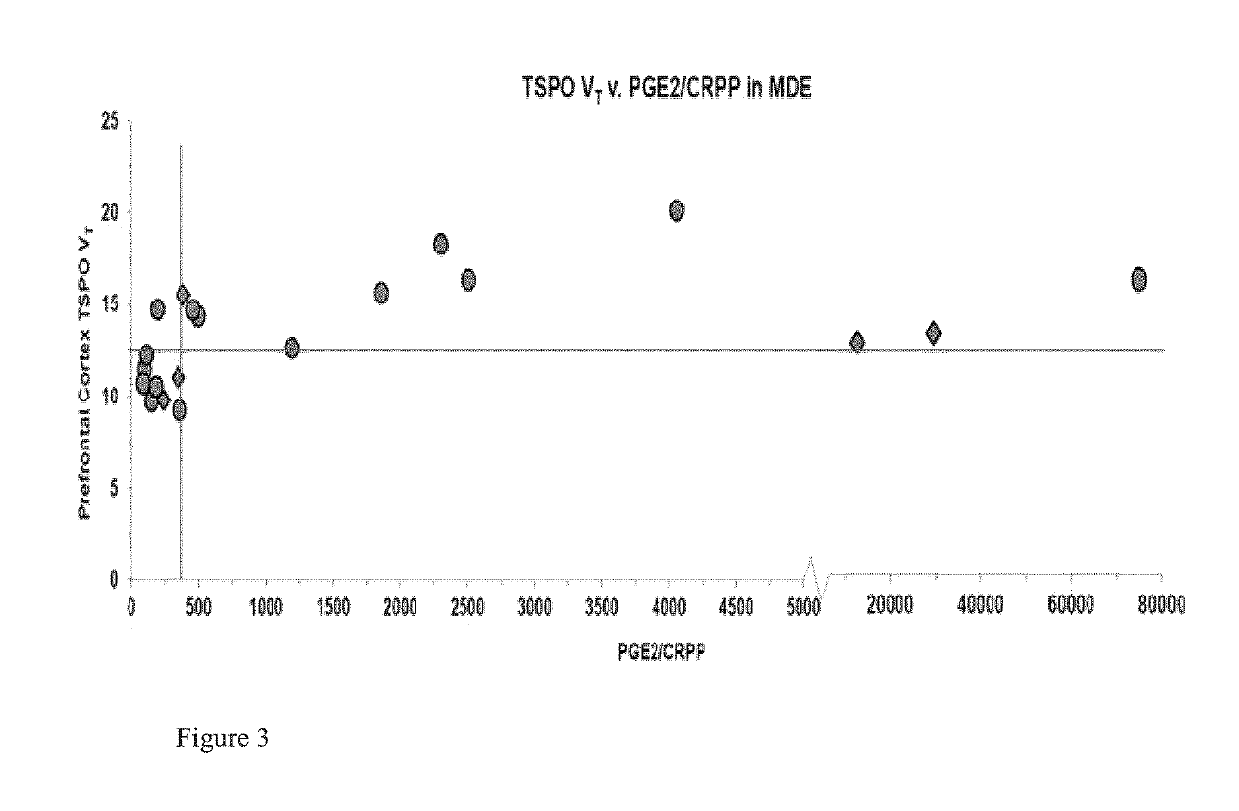Peripheral measure of central brain inflammation, markers therefor and uses thereof
a central brain and marker technology, applied in the field of peripheral brain inflammation measures and markers, can solve the problems of inability to consider definitively whether tspo binding is elevated in mde, potential bias of ongoing antidepressant use, heterogeneity of combined sampling of early and late onset mdd, etc., to reduce brain inflammation, reduce microglial activation, and reduce microglial activation
- Summary
- Abstract
- Description
- Claims
- Application Information
AI Technical Summary
Benefits of technology
Problems solved by technology
Method used
Image
Examples
example 1
Translocator Protein Distribution Volume, an In-Vivo Marker of Neuroinflammation, in the Brain During Major Depressive Episodes
[0115]Participants
[0116]Twenty subjects with a current major depressive episode (MDE) secondary to major depressive disorder (MDD) and 20 age-matched healthy participants completed the study. Participants were recruited from the Toronto area community and a tertiary care psychiatric hospital (Centre for Addiction and Mental Health, Toronto, Canada) between May 1, 2010 and Feb. 1, 2014. All were aged 18-70, non-smoking and in good physical health. None of the subjects had a history of autoimmune disease nor reported any recent illness. MDE subjects had early onset MDD (first MDE prior to age 45). Health or MDE was confirmed using the Structured Clinical Interview for DSM-V. Healthy participants were age-matched within 4 years to depressed patients. Exclusion criteria for all subjects included: being pregnant, any herbal, drug or medication use within six week...
example 2
l Blood [PGE2] / [CRP] Correlates to Increased Translocator Protein Distribution Volume, an In-Vivo Marker of Neuroinflammation, in the Brain During Major Depressive Episodes
[0136]Example 1 provides results suggesting that brain inflammation is present in clinical depression using a new advance in positron emission tomography. The imaging method is a scarce resource, requiring highly trained personnel to operate and costs about $5000 per scan. A low cost substitute marker would be highly desirable as approximately 1 in 3 people with clinical depression have brain inflammation. Further, about 4% of the general population are in the midst of a clinical depression so such a test could be useful for a substantial proportion of the general population. Present markers used by the depression research community do not actually relate to brain inflammation.
[0137]In the present Example, a different measure was employed to assess brain inflammation in blood than what has conventionally been done...
example 3
l Blood [PGE2] / [CRP] Correlates to Increased Translocator Protein Distribution Volume, an In-Vivo Marker of Neuroinflammation, in the Brain in Subjects Having Obsessive Compulsive Disorder (OCD)
[0142]Example 2 provides results indicating that peripheral blood [PGE2] / [CRP] correlates to increased TSPO VT in the brain during major depressive episodes. It was thus hypothesized that peripheral blood [PGE2] / [CRP] may correlate to other neuropsychiatric disorders and / or to brain inflammation occurring with other neuropsychiatric disorders as well. OCD is an example of a neuropsychiatric disorder which may be associated with, or diagnosed along with, MDD. Diagnosis is conventionally based on assessment of the symptoms experienced and the severity thereof. Conventional OCD diagnosis approaches are described in, for example, the diagnostic and statistical manual of mental disorders (DSM-5), which is herein incorporated by reference in its entirety. Peripheral markers correlating to OCD and / o...
PUM
| Property | Measurement | Unit |
|---|---|---|
| concentrations | aaaaa | aaaaa |
| concentration | aaaaa | aaaaa |
| major depressive disorder | aaaaa | aaaaa |
Abstract
Description
Claims
Application Information
 Login to View More
Login to View More - R&D
- Intellectual Property
- Life Sciences
- Materials
- Tech Scout
- Unparalleled Data Quality
- Higher Quality Content
- 60% Fewer Hallucinations
Browse by: Latest US Patents, China's latest patents, Technical Efficacy Thesaurus, Application Domain, Technology Topic, Popular Technical Reports.
© 2025 PatSnap. All rights reserved.Legal|Privacy policy|Modern Slavery Act Transparency Statement|Sitemap|About US| Contact US: help@patsnap.com



